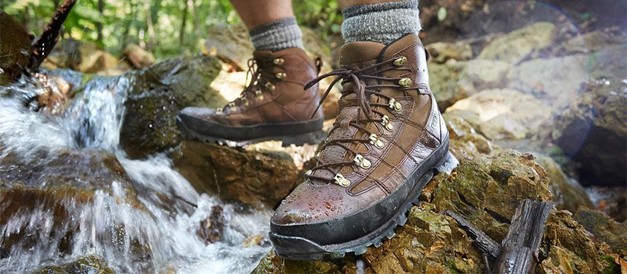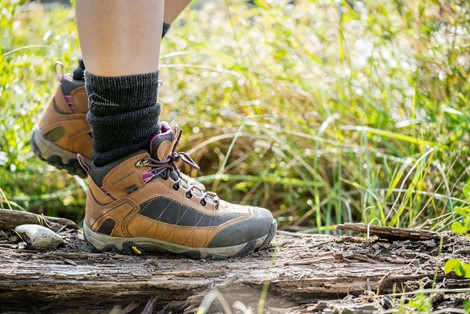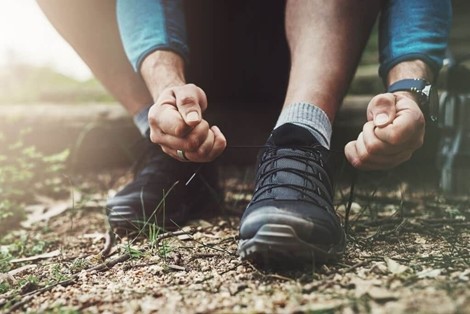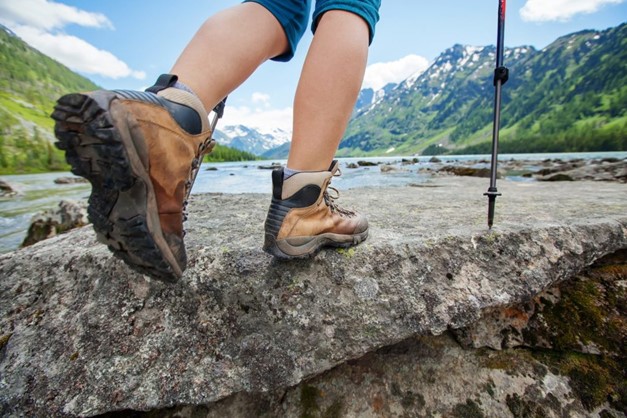There are many reasons why outdoor activities are a favorite among people. They are often much much more than recreation. For example, hiking positively affects your health, affects the fight against stress, and contributes to overall well-being. Also, it's not an expensive sport, it doesn't take much time, and the equipment is very affordable. On this page, find some handy tips on not spending a fortune on hiking gear.
The only thing that can be specific for hiking is footwear, which differs depending on the complexity of this activity. Proper shoes are essential for your safety and enjoyment of nature. They protect you from injuries, support your body, and make hiking less strenuous. So, there is no universal rule for choosing footwear.
Choose Cuts
The first choice you need to make is the shoe cut. Your options are low or high cut, although many manufacturers offer mid-cut models, too. That's a vital factor to choosing before purchase, as the wrong cut can lead to a rolled ankle or rocks lodged in your shoes.
Low hiking shoes are suitable for walking on dry, undemanding terrains. Wear them if you hike on well-maintained trails. As they resemble running shoes, they are light, flexible, and great for day hikes. But they don't cover your ankle, making it prone to injuries.
High-cut footwear is heavier and bulkier but provides excellent protection and support. That's almost necessary equipment for off-trail terrains and wet weather (non-slip models). These boots are generally high-quality and durable, with stiff soles and cuts that can go over ankles for the best support.
Footwear Materials

Before buying a pair of hiking shoes, consider the climate where you'll be hiking. Waterproof models are great for crossing streams and hiking in muddy areas and rainy weather. But this footwear is not the best choice for warm and humid climates. It can trap warm air around your feet, causing blisters and skin breakdown. Instead, opt for footwear made of breathable materials. It will help your feet stay cool and comfortable.
The upper is a crucial part of any footwear, providing support and protection to the foot. Leather shoes have great properties like breathability and waterproofing. These models are more expensive but offer support and durability. That makes them great for long hikes.
Yet, you might want to check https://divishoes.ai/trendings/best-hiking-shoes for great hiking footwear is made of synthetic. It tends to be lighter and less expensive. Also, artificial materials dry out faster. Some are breathable, but they can never be as airy as leather. As they are less durable and not water-resistant, synthetic hiking shoes are a solid option for amateur hikers and trail walkers.
Think of the Budget
When buying a pair of hiking shoes, consider your budget and your specific needs. So choose the hiking footwear for terrains you will be doing the most often. For example, you can switch from backpacking boots to a lightweight pair of hiking shoes if you don't go off-trail.
If you are serious about hiking and can afford that, it's best to buy low- and high-cut models. But if you're on a budget and have to choose, opt for mid to high-cut boots. They might cost a bit more than low-cut footwear, but they will suit most hikers. That makes them an excellent investment.
The Right Size

Finally, make sure that you choose the right size for your feet. A high-quality hiking shoe will fit your feet well and keep you comfortable for a long time. It should fit snugly but not squeeze them. Also, they should have a five percent stretch to accommodate your foot's natural movements.
Always try on shoes in the late afternoon or evening. That's a time of the day when your feet swell a lot. During a long day of hiking, your feet will probably swell. So this will help you choose comfortable footwear when your feet are 'normal.'
Also, always try hiking footwear with socks on. Finally, when lacing your boots, keep the top loose. A tight heel area is prone to blisters and other injuries. So if possible, buy hiking footwear half-size larger than your standard size.
With proper footwear come quality socks. They are made of high-quality and durable materials. Combined with the right shoes, they provide complete comfort even to hikers on the most demanding terrains.
Try Out Several Models

When you buy hiking shoes for the first time, always try out several models of different cuts. In case your feet swell, it's best to purchase a pair that features a higher heel cup. A high-cut model can also help prevent painful blisters. Keep in mind that you'll need some time to get used to this footwear.
Always buy this equipment in specialized stores with an excellent reputation. Even if you order hiking shoes online, you can find trustworthy vendors. They have good customer support and return policy. So in case you're not happy with the footwear you bought, you can return them easily.
While you're choosing a pair of hiking shoes, keep in mind that they can differ in style, size, and even color. Choose a pair that fits you well, especially if you plan to hike often and on various terrains. Some shoes need time to break in, so give them a 'test ride' before putting them on for real. That way, you'll ensure that your feet stay comfortable and protected when you're on the trail.
